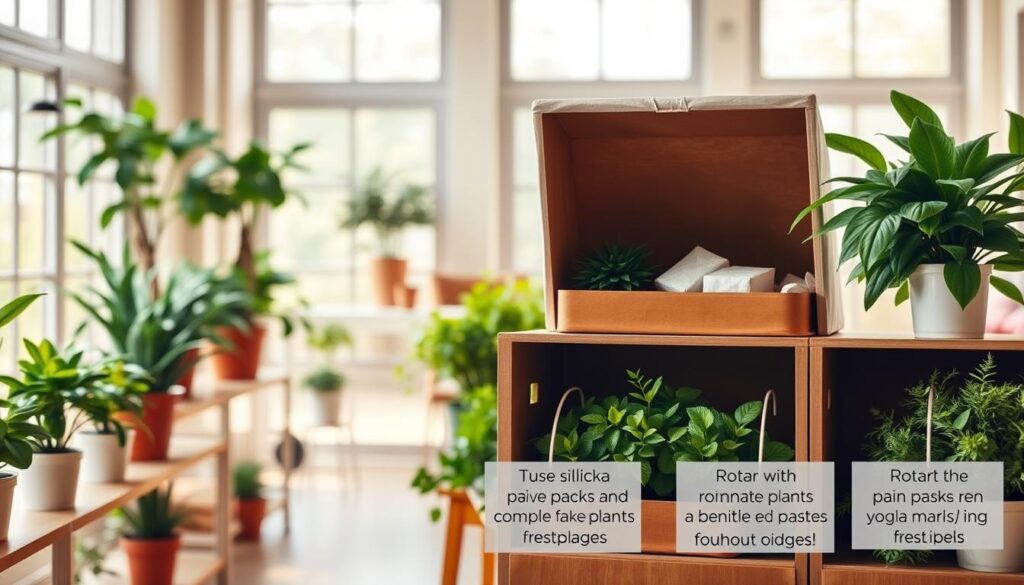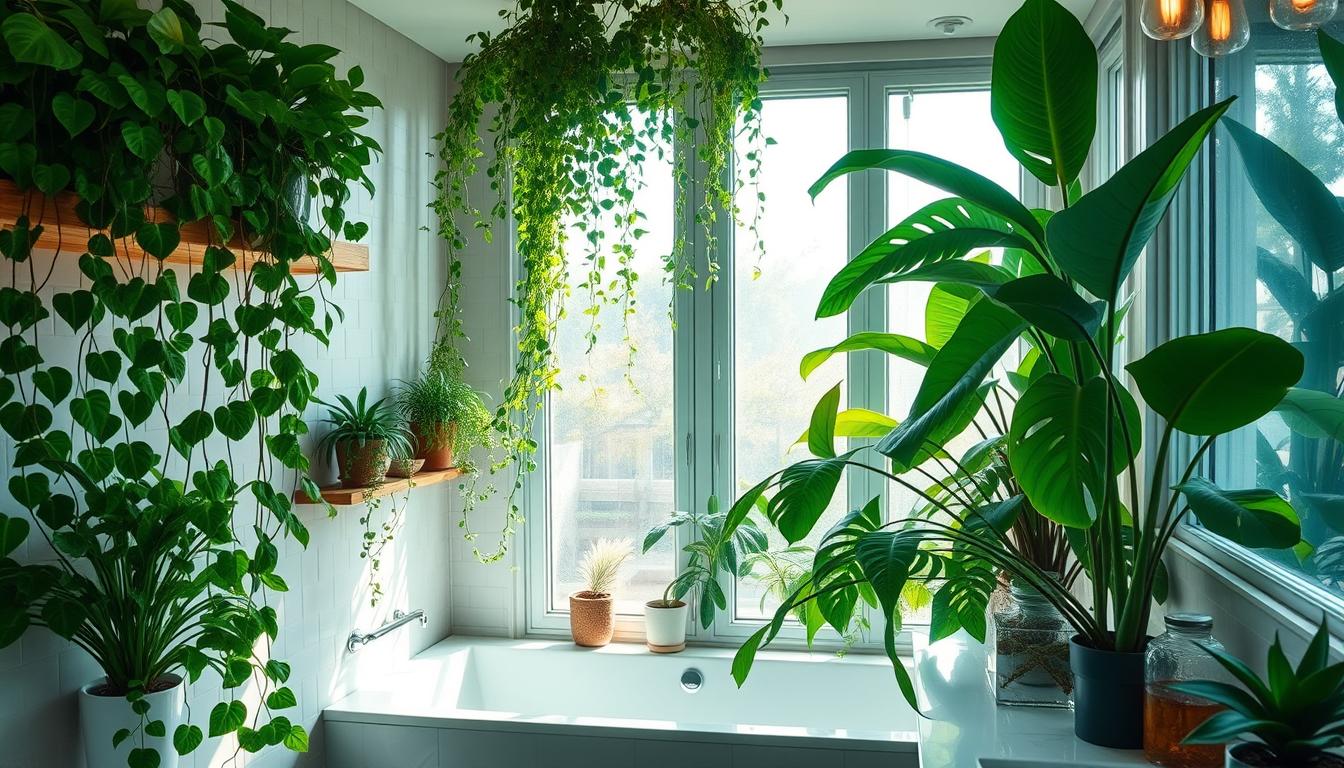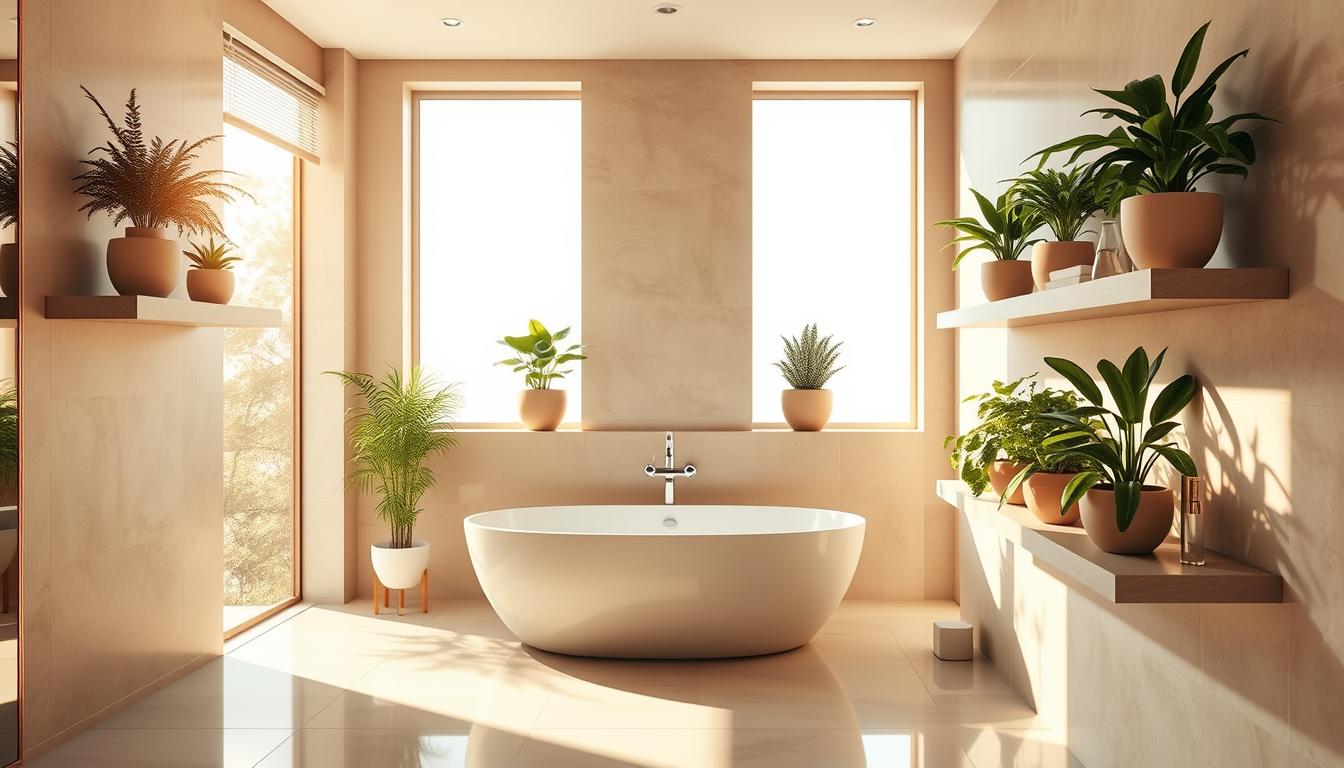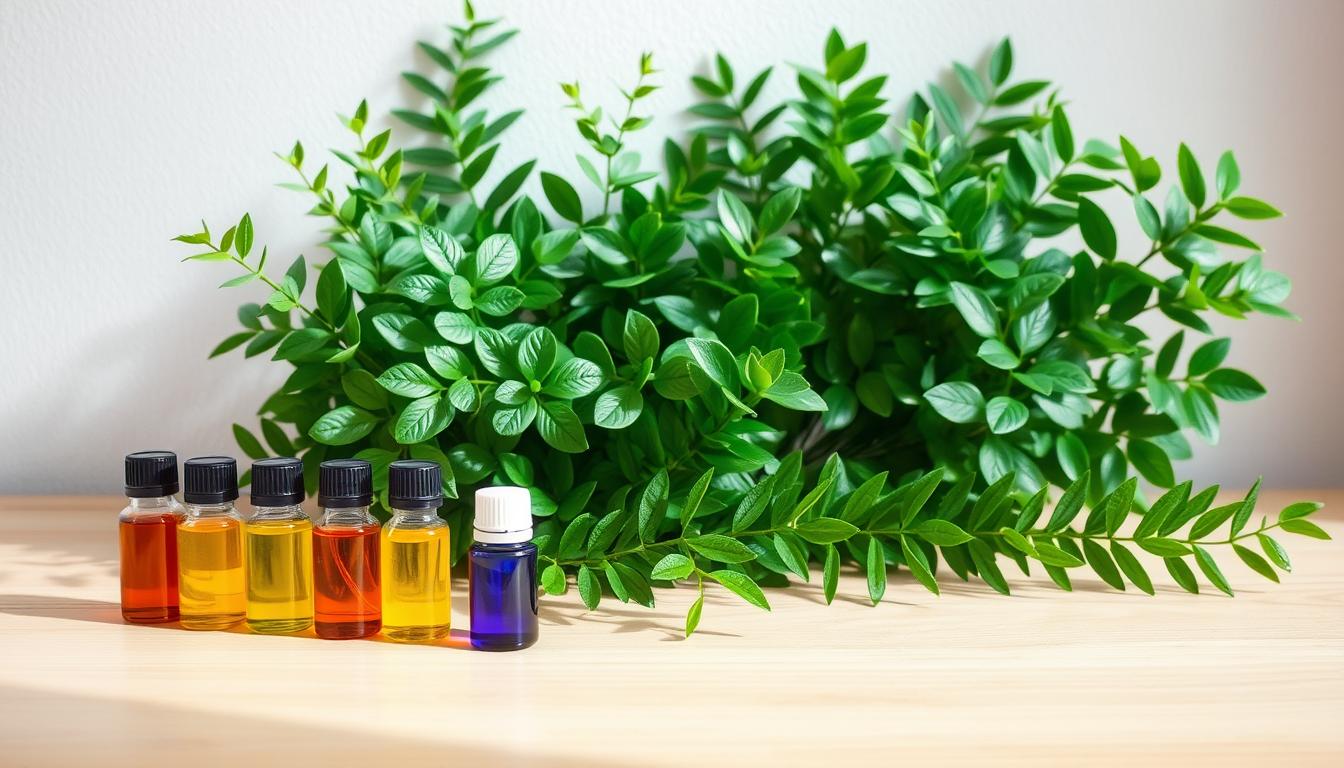Maintaining fake plants in humid places requires knowing the right steps. It’s important to clean them often to keep your indoor space looking good. This also stops dust and allergens from building up. We’ll share ways to make sure your fake plants stay beautiful, even when it’s humid.
Understanding the Importance of Cleaning Fake Plants
Cleaning fake plants regularly helps keep their beauty and function as artificial décor. Over time, dust and dirt can gather, making them look less bright and attractive. It’s important to clean them often to keep them looking fresh and welcoming.
Cleaning these artificial pieces isn’t just about looks; it makes the indoors healthier too. If you don’t clean them, they can collect allergens, affecting air quality. Not cleaning can also ruin the materials, making the plants last not as long. So, it’s key to clean them regularly to keep their beauty and ensure they last a long time.
Why Humidity Affects Fake Plants Maintenance
Humidity is crucial in keeping fake plants in good shape. Too much moisture can lead to mold and mildew. This can make them smell bad and even damage them. Also, too much humidity can change their color, making them look less beautiful.
Artificial plants do best in places with humidity below 60%. If it’s higher, they can start to deteriorate faster. To keep them looking nice, it’s important to know how humidity affects them. Then, you can take steps to take care of them the right way.
Common Mistakes to Avoid When Cleaning Fake Plants in High-Humidity Areas
Keeping fake plants looking good in humid spots needs careful cleaning. Many folks mess up when cleaning these plants, affecting how long they last and look. Knowing what these mistakes are can make cleaning better and keep the plants in good shape.
Ignoring Regular Cleaning Practices
Forgetting to clean regularly is a big mistake in humid places. Dust and dirt on fake plants lower their beauty and may attract bugs. Cleaning on schedule helps stop dirt from building up, which causes problems.
With regular attention, your plants stay bright. Plus, you avoid damage that could happen over time.
Using Harsh Chemicals
Using strong cleaners is another common error. People think tough chemicals clean better. But, harsh cleaners can scratch and harm fake plants.
It’s better to use gentle soap and the right tools. This way, you get a deep clean without hurting the plant surfaces.
Tools Needed for Effective Cleaning of Fake Plants
Keeping your fake plants looking great requires the right cleaning tools. These tools make sure your plants stay nice and clean, looking new for a long time. Dust builds up fast, especially in damp places. So, it’s important to use the right tools to keep things simple.
Essential Cleaning Tools
Start by getting these important cleaning items:
- Soft-bristled brushes to easily remove dust without damaging surfaces.
- Microfiber cloths for a gentle and effective clean that traps dust efficiently.
- Vacuum with a brush attachment to quickly clear debris from intricate leaf designs.
Safe Cleaning Solutions
Picking the right cleaning products is crucial for your fake plants. You should use:
- Mild dish soap mixed with warm water, which effectively cleans while being gentle on materials.
- White vinegar diluted with water, known for its natural disinfecting properties.
Mix these cleaning tools with safe products for an effective clean. Doing so makes sure your decor stays lovely and undamaged.
Step-by-Step Guide to Cleaning Fake Plants
Keeping fake plants clean is very important, especially where it’s moist. This guide will show you how to make your artificial plants look new. Start by dusting them off, then use a simple cleaning mix. If you follow these steps, your fake plants will stay beautiful.
Initial Dusting Techniques
First, gently dust your fake plants. Use a soft brush or a microfiber cloth to avoid scratches. Start at the top and work your way down. Dusting regularly helps them look good and stops dust from gathering.
Creating a Gentle Cleaning Solution
For a thorough clean, mix mild dish soap with warm water in a spray bottle. Spray the mix lightly on the plants, but don’t soak them. Too much water can cause mold, especially in damp areas. This method cleans your plants safely.
Signs Your Fake Plants Need Cleaning
It’s important to know when your fake plants need a clean. A key sign is when their color looks dull. This dullness means dust and dirt are starting to gather.
If you see dust on the leaves and petals, it’s time for a check-up. Regular checks can catch this early. Also, spots or stains on them mean it’s cleaning time. These issues don’t just look bad; they can change how the plants make your room feel.
Watching for these signs helps keep your fake plants looking fresh. They’ll continue to brighten up your indoor areas.
Maintaining the Aesthetics of Your Fake Plants
Fake plants can make your home look beautiful. Keeping them clean and cared for makes your indoor spaces better and helps them last longer. Having a cleaning routine for artificial greenery brings many benefits to any homeowner.
Benefits of a Regular Cleaning Routine
Cleaning your fake plants regularly has several key benefits:
- Improved visual appeal, making your space more inviting.
- Extended lifespan of artificial plants, ensuring you get the most out of your investment.
- Reduction of allergens such as dust and dirt, promoting a healthier indoor environment.
- Enhanced overall ambience, allowing your décor to thrive and remain attractive.
How Humidity Influences the Care of Fake Plants
Understanding how humidity impacts fake plants is key. It keeps them looking good and stops mold and mildew. These issues can happen if it’s too humid.
Optimal Humidity Levels for Fake Plants
The best humidity for artificial plants is between 40% and 60%. This range stops the materials from getting damaged and keeps mold away. Keeping an eye on humidity helps keep your plants and air clean.
Preventing Mold and Mildew
Stopping mold before it starts is important for your fake plants. Check them often for any mold signs. When it’s humid, clean and dry your plants well to avoid mold.
Using dehumidifiers or air purifiers can help. They lower moisture in your home. This makes a better space for your decorations and for everyone living there.
Storage Tips for Fake Plants in Humid Environments
It’s crucial to store fake plants the right way in damp places to avoid damage. Make sure the plants are clean and dry before you store them. Using breathable fabric bags or acid-free tissue paper for wrapping is a good idea. It helps air move around and keeps moisture away.
Keep them out of direct sunlight to stop colors from fading. Store your fake plants in a cool, dry spot to keep them looking good. These tips will help protect your fake plants in humid spots, making sure they stay a lovely part of your home décor.

Conclusion
In summary, taking care of fake plants is really important, especially in damp places. It’s key to keep them looking good and to make them last longer. Knowing the dos and don’ts, like sticking to a cleaning schedule and avoiding harmful chemicals, is crucial.
Choosing the correct tools and safe cleaning agents helps keep your artificial plants looking lively. It’s also important to understand how moisture affects them. This knowledge not only saves your fake plants but also keeps your home’s air healthy. Making these care steps part of your regular routine will make your indoors look and feel welcoming.



